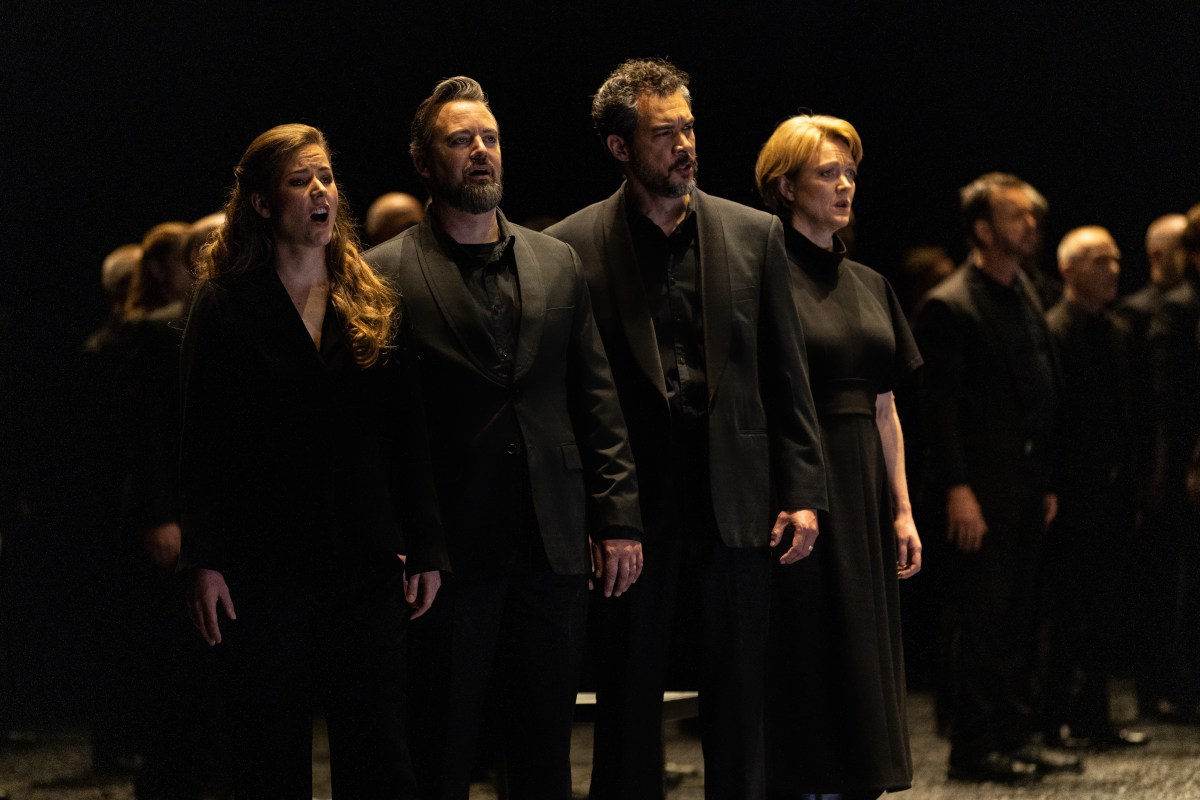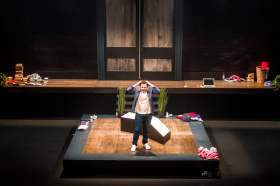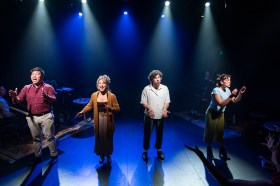Verdi’s Requiem was first performed in a church (San Marco in Milan), and then almost immediately afterwards in an opera house (La Scala). Both were conducted by Verdi himself, and featured four soloists who’d all previously been cast in the premiere of his most recent opera Aida.
Ongoing quibbles about whether or not Verdi was sufficiently religious, or whether the Requiem is more inherently ‘dramatic’ or ‘spiritual’, surely miss the point. The work expresses the Shakespearean breadth of his vision, from the blazing heights of love to the sombre depths of tragedy.
Unfortunately, Christian Spuck’s production and choreography for Ballett Zürich appears to be deaf to what Verdi wrote. In fact music and dance are at such cross purposes that after a while I found myself alternately closing my eyes to listen, or trying to block my ears and watch.
The dancers were certainly impressive, and the singers were in glorious voice, with the exception of tenor Paul O’Neill, whose voice sounded strained on the night I attended.
The chorus did outstanding work (especially given the choreography they were called upon to execute while singing); and the orchestra played with distinction under the thoughtful baton of Johannes Fritzsch, with some thrilling outbursts from the percussion in the Dies Irae. However, I felt that Fritzsch’s direction lacked definition, energy and (crucially) pace.
Verdi’s music is nothing if not fiery and brilliant – or alternatively pitch-dark. Spuck’s production on the contrary is all shades of grey and faded colours– from the set design, with its ash-covered floor and blackboard-like walls (which at one point the dancers scribble on with chalk), to the drabness and pallor of the dancers’ costumes (apart from one flimsy black dress, and the staid black shirts and trousers worn by the soloists and chorus).
As for the choreography: apart from occasional outbursts of sprinting or darting around, the movement was mostly languid and heavily indebted to classical ballet, but without any of the latter’s sense of weightlessness or flight (instead there was a lot of prolonged lifting, carrying and dragging). Meanwhile the poor soloists wandered slowly and portentously around the stage as if in a Wagner opera, while their voices disappeared up into the lighting grid.
The chorus came off best: often crouching and moving intently en masse while singing with hushed intensity, they were like a host of shuffling zombies or perhaps a corps de ballet of the damned trapped in some kind of choreographic hell.
Possibly all of this was meant to make us feel ‘sad’. If so, ‘sad’ is the one thing Verdi’s music isn’t – tragic, searing, raging, defiant, terrifying, despairing, soaring, beautiful, even ethereal, yes, but never ‘sad’. It’s a requiem, but it’s not a dirge.
Read: Music review: Julia Jacklin, Adelaide Festival
The bottom line is that Verdi’s Requiem isn’t written to be danced to. That doesn’t necessarily mean it can’t be danced to, but such an idea would call for something more energetic and transgressive than Spuck’s enervated and outdated choreography and staging. In other words: it would call for something more like Verdi’s Requiem.
Messa da Requiem
Choreography and Production by Christian Spuck
Ballett Zürich
Eleanor Lyons, Caitlin Hulcup, Paul O’Neill, Pelham Andrews
Adelaide Festival Chorus
Adelaide Symphony Orchestra
Messa da Requiem was performed from 8-11 March as part of Adelaide Festival.





